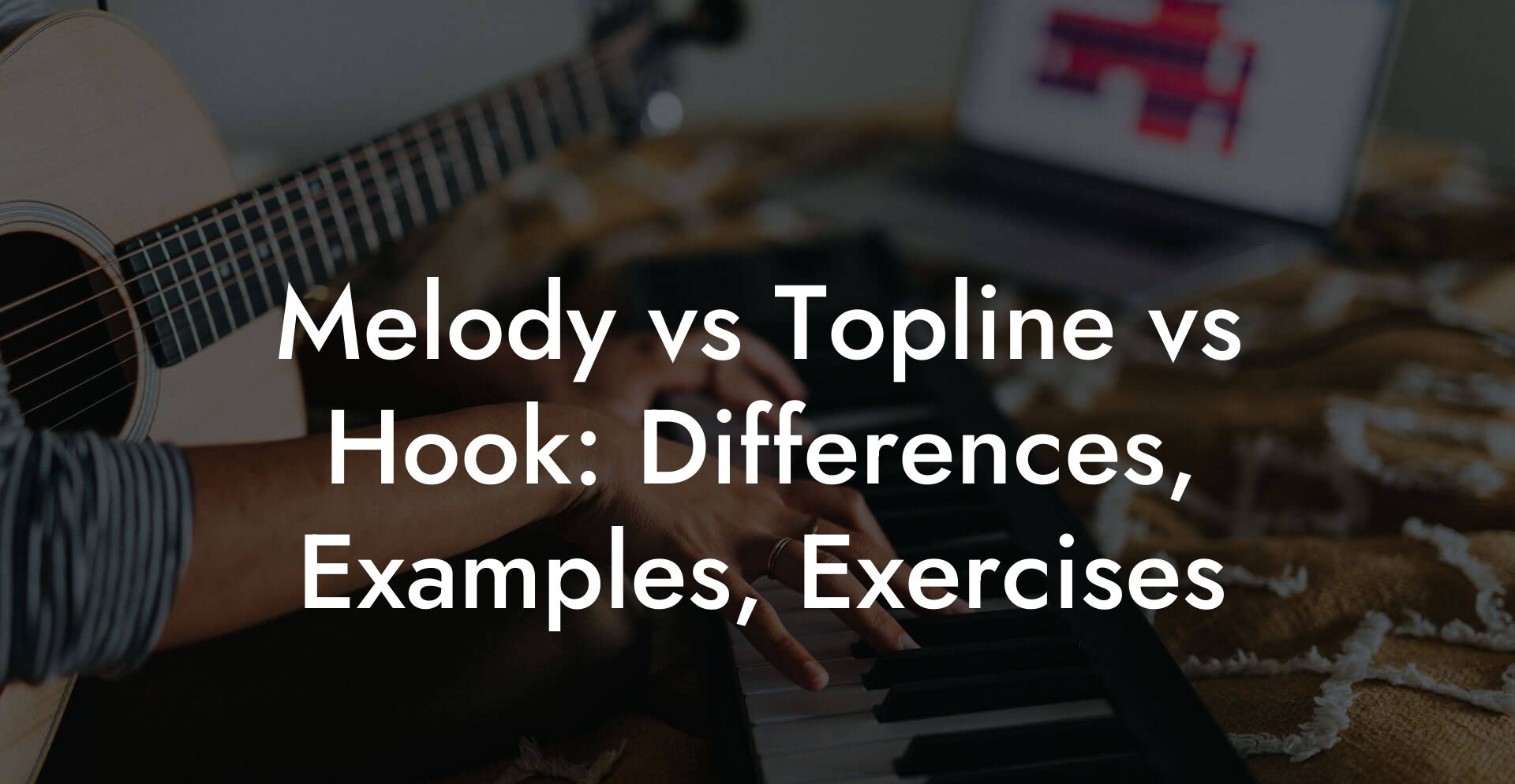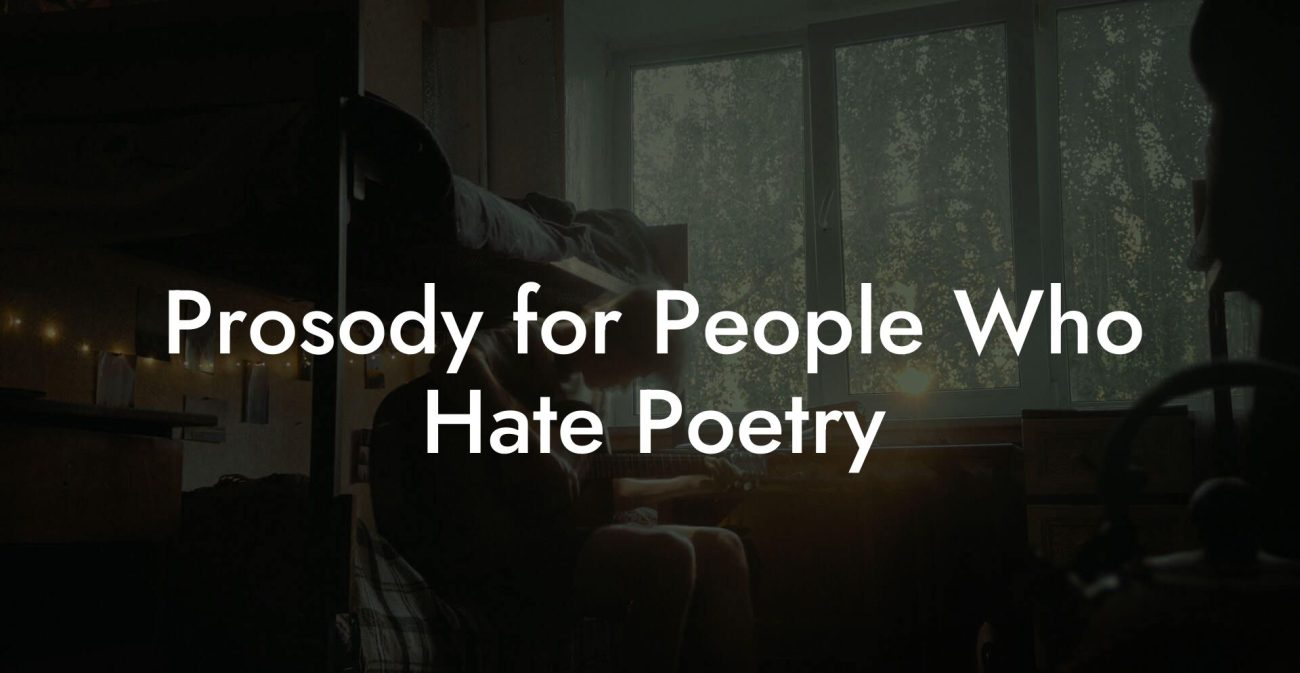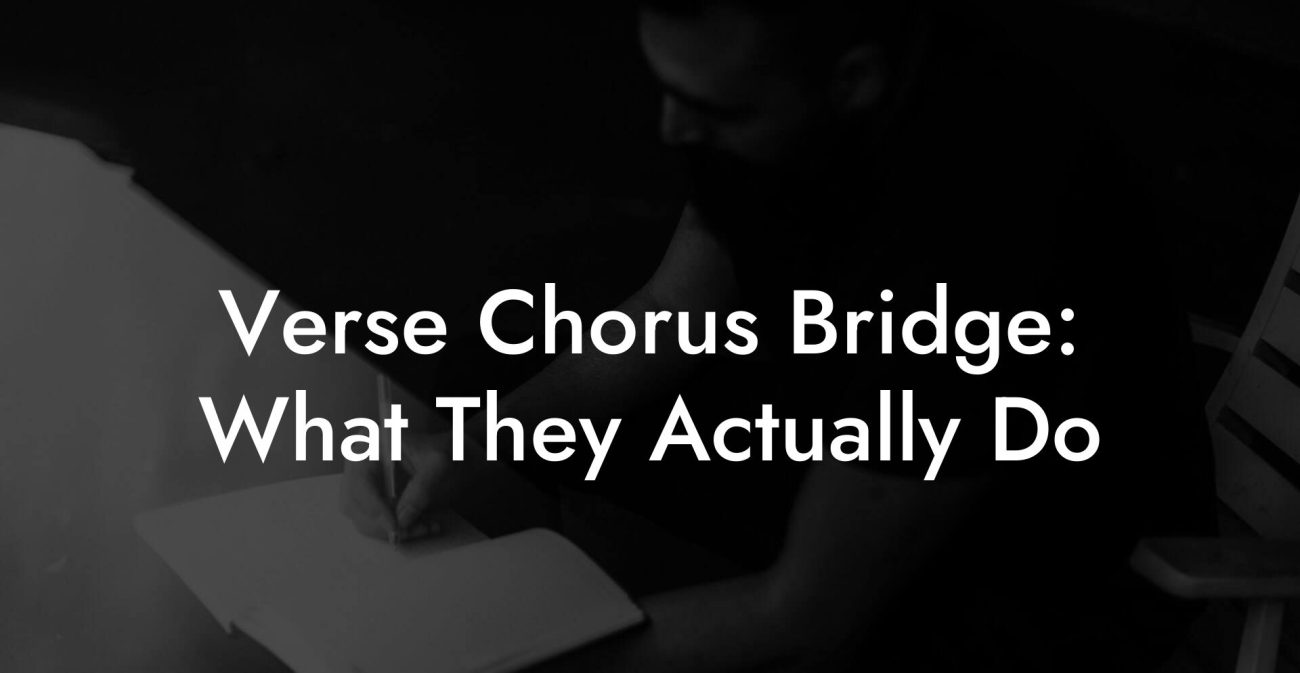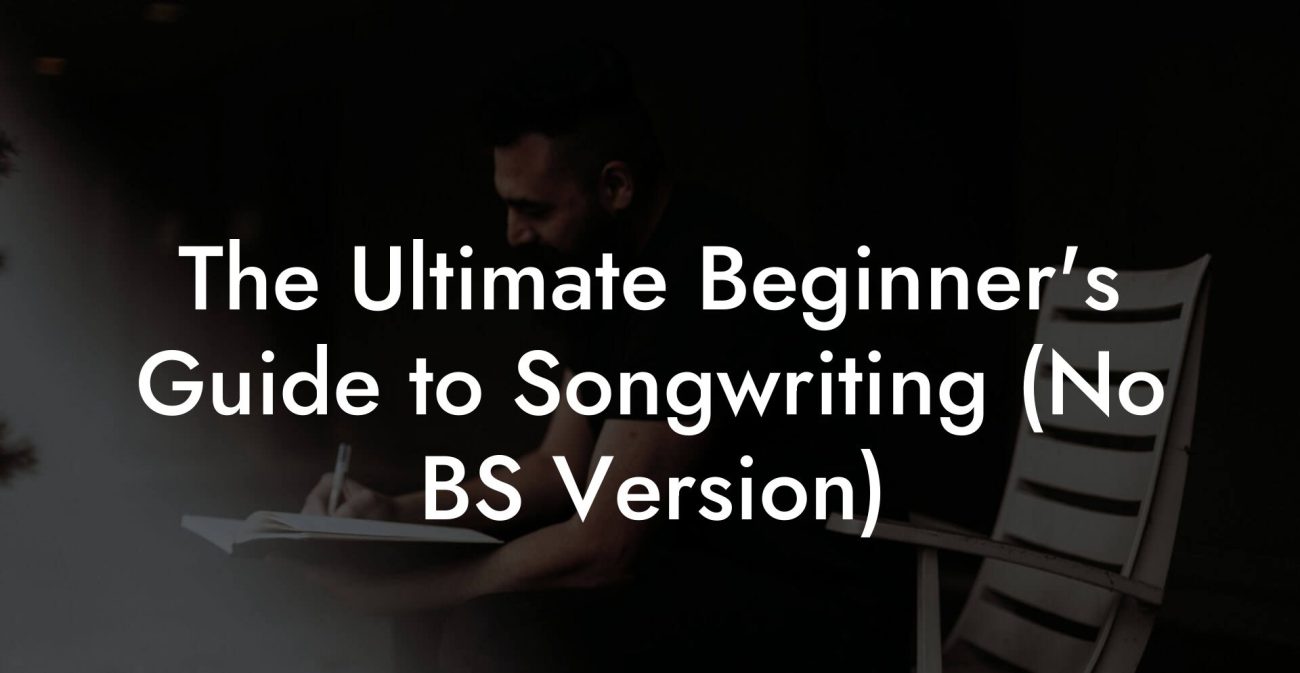Songwriting Advice
Melody vs Topline vs Hook: Differences, Examples, Exercises

Stop confusing the words and start writing hits. You have heard these terms thrown around in writing rooms and producer texts. Someone says write a topline and your brain freezes. Another says the hook is weak and you want to scream. This guide makes the differences obvious. You will get clear definitions, real life scenarios you can picture, musical examples written in plain language, and timed exercises that force good instincts. No fluff. No theory lectures that make you want to nap. This is for working writers who want to ship songs that stick.
Quick Interruption: Ever wondered how huge artists end up fighting for their own songs? The answer is in the fine print. Learn the lines that protect you. Own your masters. Keep royalties. Keep playing shows without moving back in with Mom. Find out more →
Quick Links to Useful Sections
- Quick Summary
- Why this matters
- Detailed Definitions
- Melody
- Topline
- Hook
- How Melody, Topline, and Hook Relate
- Examples You Can Imagine and Use Right Now
- Example 1: Melody first
- Example 2: Hook first
- Example 3: Topline as songwriting assignment
- Why Hooks Fail
- How to Rescue a Weak Hook Fast
- Writing Workflows for Different Setups
- Beat first producers
- Melody first writers
- Lyrics first writers
- Exercises You Can Do Right Now
- Exercise A: Vowel Pass
- Exercise B: Topline Sprint
- Exercise C: Hook Surgery
- Prosody Clinic
- Melodic Tools That Create Hooks
- Examples of Hooks and Why They Work
- Example: Two word hook
- Example: Melodic motif as hook
- Example: Rhythmic vocal tag as hook
- Topline Deliverables and How to Present Them
- Common Questions Producers Will Ask and How to Answer
- Does this topline have a clear hook
- Where does the title land
- Can we make the hook more immediate for social
- Advanced Tips for Experienced Writers
- Before and After Examples for Practice
- How to Practice Daily
- Common Mistakes and Fast Fixes
- Action Plan You Can Use Today
- Melody vs Topline vs Hook FAQ
We speak your language. We will explain any acronyms or industry words as if your friend just texted you for help at 2 a m. You will learn what to write first depending on your setup. You will learn how to rescue a weak hook. You will walk away with exercises that force you to choose melody words that actually fit the music. We will also cover common problems and quick fixes producers will thank you for. Yes this will be funny. Yes you will still feel smart afterwards.
Quick Summary
- Melody is a sequence of notes that form a tune. It is what you hum.
- Topline means the complete vocal part over a track. It usually includes melody words and any vocal hooks. Topline can include the chorus, verses, pre chorus, and ad libs.
- Hook is the most memorable musical or lyrical phrase in the song. The hook is the thing people hum in the grocery line when they should be doing other things.
Why this matters
If you cannot explain these words to someone in one sentence you will waste studio time and creative energy. Saying them clearly gives you tools for collaboration. If a producer says the topline needs edges you will know whether they mean melody shape or a lyric swap. If your friend says the hook is not landing you will know what to try immediately. This saves money and reputation points.
Detailed Definitions
Melody
Melody is the ordered sequence of pitches and rhythms that creates a singable line. Melody exists without words. It can be whistled, hummed, or played on any instrument. Think of the phrase from a song that you whistle under your breath without remembering the lyrics. That is melody. It has contour, it has rhythm, and it lives on a scale or mode. Melody tells the listener where to breathe and where to feel tension.
Real life scenario: You are in the shower and you start humming three notes that feel like the start of something. No words. That three note idea is a melody. If you open Spotify and search the song by humming it into the app and it matches, congratulations. You created a melody that is identifiable and sticky.
Topline
Topline is the vocal line that sits over the track. It usually includes lyrics, melody, and choices about phrasing. When writers say write a topline they mean create the sung vocal from start to finish. Topline writers often work to a beat or instrumental. They deliver a vocal melody with words that fit the groove.
Real life scenario: You are in a session with a producer who made a beat. They want a topline. You sit with the laptop and write the verses, pre chorus, chorus, and any vocal hooks. You sing the whole vocal into the mic and hand over a demo. That package of words plus the notes you sang is the topline.
Hook
The hook is the most memorable element. It can be melodic, lyrical, rhythmic, or even a production stinger. Hooks are short and repeatable. Hooks are what listeners remember five minutes after the song ends. Hooks are also what grab attention in a 15 second clip. Hooks can live inside the topline or exist separately as a vocal chant, a guitar riff, or a synth loop.
Real life scenario: At a party the DJ plays a track and everyone sings one small phrase together. No one knows the verses. Everyone sings that one line. That is the hook. It might be the chorus title or a repeating vocal tag after the chorus.
How Melody, Topline, and Hook Relate
They overlap but they are not the same. Melody is musical DNA. Topline is the full spoken and sung delivery of the song. Hook is the bait. The three can be created in different orders. You can have a hook before any topline exists. You can have a topline with no clear hook. You can have a great melody that never becomes a hook because the words or production bury it.
Examples of relationship patterns
- Melody first. You hum a melody on your phone and later add words. The melody becomes the center of the topline and one phrase becomes the hook.
- Topline first. You write lyrics and melody together on a beat then refine the hook as a chant inside the chorus.
- Hook first. Producer makes a viral synth riff. You write a topline around that riff and the riff functions as the hook while your chorus supports it.
Examples You Can Imagine and Use Right Now
Example 1: Melody first
Melody hummed: do do do do dooo do
Write words later: I called your name and the night answered back
Topline: Verse uses conversational phrasing, chorus elongates the hummed motif on the title line. The hummed motif becomes the chorus opening and then the final line repeats it as a tag which becomes the hook.
Example 2: Hook first
Producer loop: a synth stab that plays a short three note pattern on every bar
Topline: Writer adds a small chant that sits over the synth. The chant is two words repeated three times. Those two words are the hook. The melody of the rest of the vocal can move around but the chant returns and becomes the memory center.
Example 3: Topline as songwriting assignment
Brief: Make a topline that works on this 100 BPM pop beat and fits a moody vibe
Result: Writer delivers verses with conversational melody that sits low, a pre chorus that tightens rhythm, and a chorus where the title lands on a long note. The chorus contains a repeated three syllable motif that is the hook.
Why Hooks Fail
- They are too long. If the hook cannot be hummed in less than five seconds it will not stick.
- They are buried in dense production. If the biggest sound is a wall of pads the human ear has no place to latch.
- They have bad prosody. If the natural word stress does not match the musical stress the line feels awkward.
- They try to be clever instead of emotional. Cleverness is cute. Emotion is sticky.
How to Rescue a Weak Hook Fast
Use these quick tests and fixes in the studio when someone says the hook is not hitting.
- Sing the chorus on vowels only. If the melody is still interesting the issue is the words. Change the lyric.
- Isolate the hook phrase and play it as an instrumental lead. If it sounds small add a new texture or octave layer.
- Check prosody. Speak the line at normal speed and mark the stresses. Move strong syllables to strong beats.
- Simplify. Remove any word that is not necessary to the emotional message. Hooks are minimalist.
- Change placement. Try moving the title to the downbeat or to the last long note of the phrase. Tiny moves can unlock the ear.
Writing Workflows for Different Setups
Beat first producers
Play the beat and find the groove. Hum along without words. Do a vowel pass for two minutes. Record the best three gestures. Take the best gesture and place a one or two word title on it. Build the chorus around that title. Write verses that contain concrete images that feed into the chorus promise. Keep the hook short so it sits on the beat for social clips.
Melody first writers
Record the melody on your phone. Tag the moments that feel inevitable. Try placing different short words on that moment. Some vowels will cry out to be stretched. Use the vowels that work for high notes. Build a topline by writing the rest of the vocal to support the melody phrase that wants to be the hook. If a phrase feels like a hook, repeat it as a ring phrase.
Lyrics first writers
Write the title early. The title can be the hook if it is short and emotional. Sketch a rhythmic reading of the words. Clap the rhythm. Now match pitches to the rhythm until one phrase sings easily. That becomes the chorus melody. Keep scanning the verse for a line you can use as a pre chorus nudge. A strong topline will connect phrases so the hook feels earned.
Exercises You Can Do Right Now
All drills are timed. Use your phone timer. Keep tracks short. You will get more honest progress with three focused twenty minute passes than with a four hour wandering session.
Exercise A: Vowel Pass
Time: 10 minutes
- Play a simple loop or a metronome at 80 to 110 BPM.
- Sing on a single vowel such as ah or oh for ten minutes. Do not think of words. Record it.
- Listen back and mark three gestures you would repeat in a hook.
- Try placing a one or two word title on the best gesture.
Why this works. Vowels are the shape of melody. They reveal where the voice wants to land without the distraction of meaning.
Exercise B: Topline Sprint
Time: 30 minutes
- Pick a beat. Limit yourself to three chord changes if there are chords.
- Write a one sentence emotional promise. Turn it into a short title.
- Draft a chorus melody and lyric in 15 minutes using that title. Do not polish. Record the raw vocal.
- Spend the final 15 minutes writing a contrasting verse with one concrete image. Record it too.
Why this works. The time pressure pushes you to prioritize clarity and the title becomes the magnet for the hook.
Exercise C: Hook Surgery
Time: 20 minutes
- Take any chorus you think is mediocre.
- Isolate the central line and try three variations each at 5 minutes per variation. Change one element each time. Try a different vowel shape. Try a rhyme swap. Try moving the accent to another syllable.
- Pick the version that feels best to your body not just your brain.
Why this works. Small changes reveal where the groove wants the hook to live.
Prosody Clinic
Prosody is the relationship between language stress and musical stress. Bad prosody makes great words feel clumsy. Good prosody makes simple words feel inevitable. Here is how you check prosody.
- Speak the line at conversation speed. Mark where your natural emphasis falls.
- Sing the line and mark where the musical accents fall. Do they match?
- If they do not match rewrite the lyric so the strong syllable sits on the strong beat or rewrite the melody so it aligns with the natural stress.
Real example
Bad prosody: I didn't expect to feel so small
If the musical stress falls on the word expect it will feel wrong because the natural emphasis is on didn't or feel. Fix: I did not expect this tiny feeling which puts a stronger word on the musical stress.
Melodic Tools That Create Hooks
- Repetition of a short motif across bars. The ear loves patterns.
- Leap then resolve. A jump into the hook followed by stepwise motion gives a satisfying arrival.
- Rhythmic identity. A unique rhythmic placement of syllables can be as memorable as a tune.
- Call and response. Use a shout or instrumental answer after your vocal hook to reinforce it.
- Space. Leave a beat of rest before the hook. Silence amplifies the next sound.
Examples of Hooks and Why They Work
Example: Two word hook
Hook: Free fall
Why it works: Two sharp words with contrasting consonants create a bite. The vowel in fall lets the singer stretch it. The words feel like a command and a state at once.
Example: Melodic motif as hook
Motif: Three rising notes followed by one long note
Why it works: The shape is easy to hum and the final long note gives the ear time to hang on the phrase. If you add a short lyric there it becomes a lyrical hook too.
Example: Rhythmic vocal tag as hook
Tag: Na na na na na
Why it works: Simple consonants and rhythm form a memorable earworm. It also translates well to social clips because people will mouth it even without knowing the words.
Topline Deliverables and How to Present Them
If you sell toplines or work in collaborative sessions you need a deliverable format that producers and labels can use. Here is what to include.
- Demo vocal file with clear sections labeled. Use toggles in the file name such as "Verse", "Pre", "Chorus", "Bridge".
- A one page lyric sheet with suggested melody notes or solfa if helpful. Keep it clean and readable.
- Short notes about where the hook is and why it works. This helps the producer know what to highlight.
- Optional stems of your vocal layers if you recorded harmonies or ad libs. That makes it easy to test placement.
Common Questions Producers Will Ask and How to Answer
Does this topline have a clear hook
Answer: Point to the exact bars and describe the hook. Explain whether it is melodic lyric or production. If the hook is not obvious show two alternate hook ideas you can try in the session. This proves you can iterate fast.
Where does the title land
Answer: Tell them the beat or the count where the title hits and why. If the title hits a long note say so. If it hits the downbeat say that. Producers appreciate clarity because it affects arrangement choices.
Can we make the hook more immediate for social
Answer: Yes. Suggest a 15 second clip that begins with the chorus one bar before the title and then the title. That gives editors a predictable cut point. Offer a version with the first chorus starting at bar 8 so it lands earlier in streaming previews.
Advanced Tips for Experienced Writers
- Use micro hooks. Place an earworm inside the verse that repeats later as a harmony. It feels familiar without being redundant.
- Turn a production motif into a vocal hook by matching its rhythm with a syllable pattern.
- Use rhythmic displacement. Put the same melodic phrase on different beat placements in verse and chorus for surprise.
- Build a hook that works in one octave for singers with limited range. If the hook is comfortable it will be more repeatable live.
Before and After Examples for Practice
Practice rewriting the lines to improve melody, topline integrity, or hook quality. Try the edits out loud.
Before: I miss you every night and I wait.
Problem: Vague, no hook, melody needs help.
After: Midnight calls your name. I let it ring. The melody uses a three note motif ending on your name which repeats as the hook.
Before: We used to laugh about nothing at all.
Problem: Generic line and no rhythmic identity.
After: The couch remembers our punchlines. We left the lights on like we were trying to be famous. The chorus pulls a two word title that becomes the chant hook.
How to Practice Daily
Do at least one 20 minute focused pass every day. Rotate between melody only, topline sprint, and hook surgery. Keep a folder of your one line titles. Try to write a new two word hook every day for a month. At the end of the month you will have tested 30 different small ideas and at least one will be gold.
Common Mistakes and Fast Fixes
- Mistake Try to cram information into the hook. Fix Make the hook one emotional promise not an essay.
- Mistake Melody is too busy for the beat. Fix Simplify the rhythm and use longer notes.
- Mistake Topline changes with every listen. Fix Lock the chorus melody early and treat any change like an arrangement item not a rewrite.
- Mistake Hook is all words and no melody. Fix Try singing the line without words and force it into a memorable motif.
Action Plan You Can Use Today
- Set a timer for 10 minutes and do a vowel pass over a loop. Save the best gestures.
- Pick one gesture and create a one word title. Stretch it into a two line chorus in 15 minutes.
- Record a topline demo with verse and chorus in 30 minutes.
- Do hook surgery on the chorus for 20 minutes. Try three variants.
- Share the demo with two trusted listeners and ask one clear question. Which line stuck with you and why.
Melody vs Topline vs Hook FAQ





